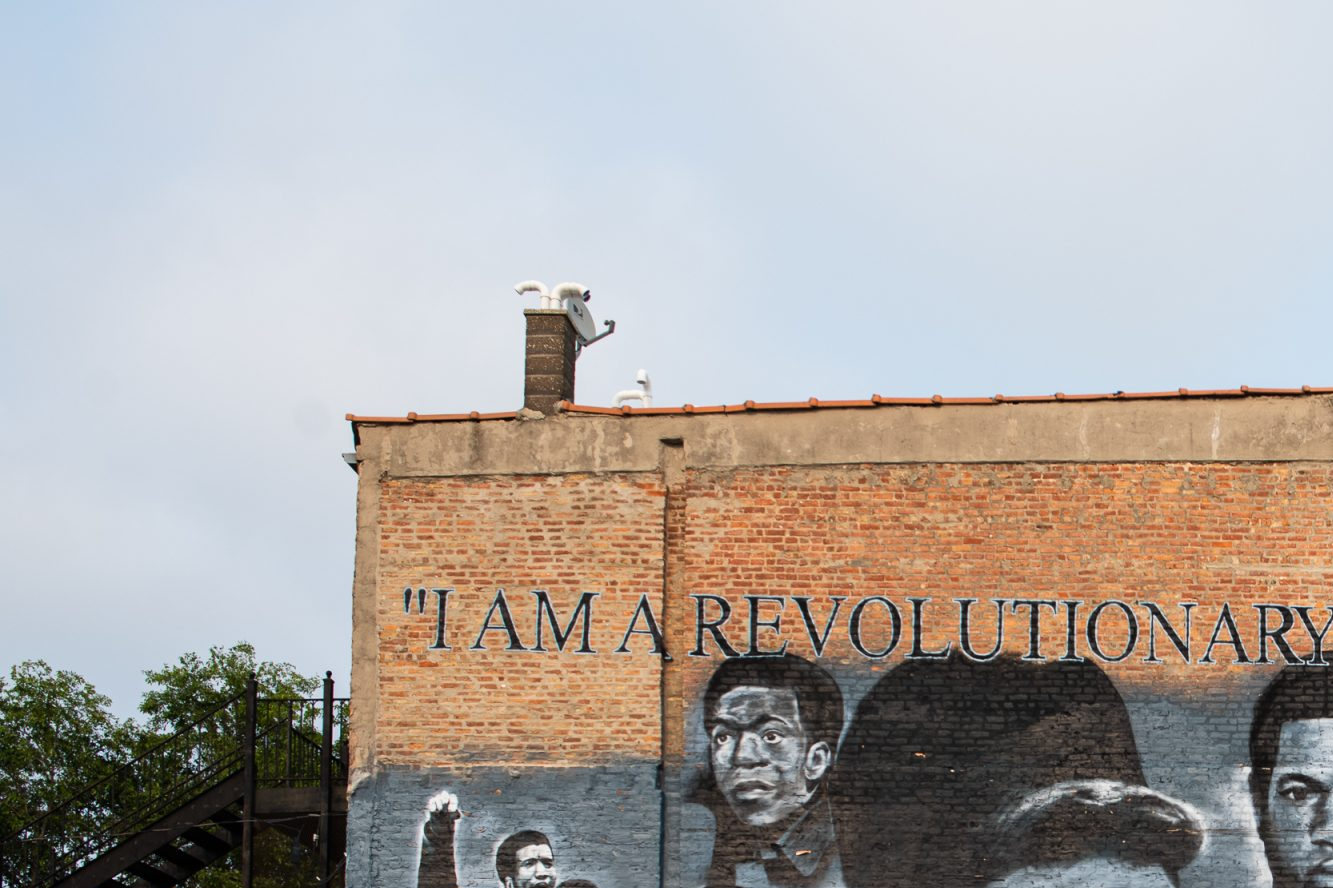 “I AM A REVOLUTIONARY” mural celebrating Illinois Black Panther Party chapter Deputy Chairman Fred Hampton, Mark Clark, and others at California and Madison. at California and Madison. | ANF Chicago for The TRiiBE
“I AM A REVOLUTIONARY” mural celebrating Illinois Black Panther Party chapter Deputy Chairman Fred Hampton, Mark Clark, and others at California and Madison. at California and Madison. | ANF Chicago for The TRiiBE
It’s often said that history—which adopts the form of landmarks, plaques and statues—is written by the victors. Black Chicago has a storied legacy of hard-fought victories, and in many cases it’s been community members, family, and people from around the world who have done the work of commemorating them. They’ve done so by creating art, starting petitions to get landmark status, and raising funds to preserve historic sites as museums.
Cementing Black history in Chicago has historically taken many forms. Family members with no access to capital have pushed legislators to make homes into museums. For example, Fred Hampton Jr., Iberia Hampton, and the Save The Hampton House initiative fought to get the Maywood Village Board to recognize the childhood home of slain Black Panther leader Fred Hampton as a landmark. Sandra Cooper, the great-granddaughter of Muddy Waters, collaborated with community organizations to obtain landmark status and funds to create the Mojo Museum. The Mojo Museum is the first home Waters purchased, and it served as a gathering place for blues musicians and entertainers.
Honoring Black history has also meant protecting historic buildings from demolition. In March 2023, Preservation Chicago launched a petition to help The Warehouse, the birthplace of house music and the old stomping ground of a vibrant, Black, gay community, achieve landmark status. Over 14,000 people from all over the world have signed the petition and the property has received preliminary support from the Commission on Chicago Landmarks.
In the absence of ownership of a physical space, the community has found alternative ways to fortify the legacies of beloved Black figures. Although the Ida B. Wells homes were demolished in 2011, siblings Michelle Duster and Daniel Duster spent years lobbying local officials and raising funds for a commemorative sculpture honoring their great grandmother. The “Light of Truth” monument honoring Ida B. Wells was finally erected in 2021.
The Black Panther mural at the corner of California and Madison which honors Fred Hampton Jr. and Mark Clark is another example of commemoration in the absence of a building.
In Chicago, history is everywhere. Buildings that stretch towards the clouds, massive statues, street names, murals, and museums honor myriad historical figures. Black history, however, might require a bit of a detour to find.
In unassuming two-flats on Lawrence and Lake Park, exterior walls of liquor stores on the West Side, and cul-de-sacs behind newly developed housing complexes near the lakefront, one can find the stories of revolutionaries, iconic DJs, and suffragettes. The heroes of Black Chicago have historically been ordinary people, so it is incredibly fitting that ordinary Black Chicagoans are shepherding the movements to honor them.


